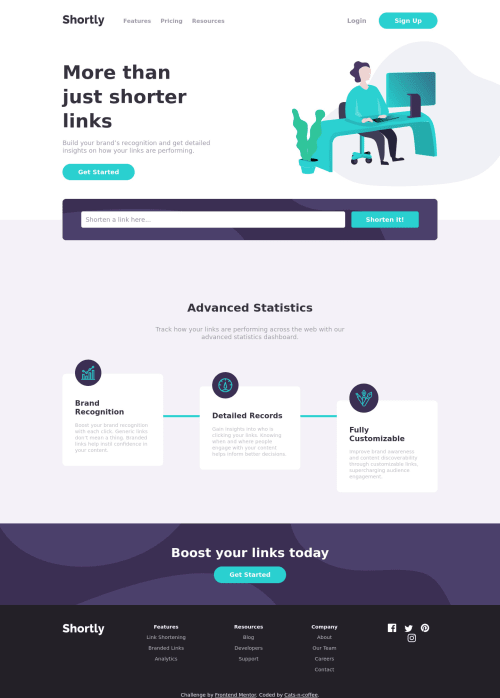URL Shortener with HTML, JS and SCSS

Solution retrospective
Hi everyone! I did this challenge using plain HTML, JS and organized the styles with SCSS. I did a little bit of research/learning on how to scale SVGs and use them the proper way so they behave as expected, let me know if I should've done things differently. I believe accessibility could be a lot better, let me know what I should change first. The dynamic result list is inside a ul tag, so all rows are li tags with span tags inside (does it make sense?). Any feedback on anything is greatly appreciated, thank you!
Please log in to post a comment
Log in with GitHubCommunity feedback
- @iamjmitch
Nice looking website. Only thing I would suggest is to add the max-width of 1440px from the style guide as when viewing the site on a 2k monitor, everything is really spread out and far apart
Join our Discord community
Join thousands of Frontend Mentor community members taking the challenges, sharing resources, helping each other, and chatting about all things front-end!
Join our Discord